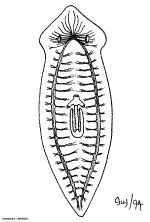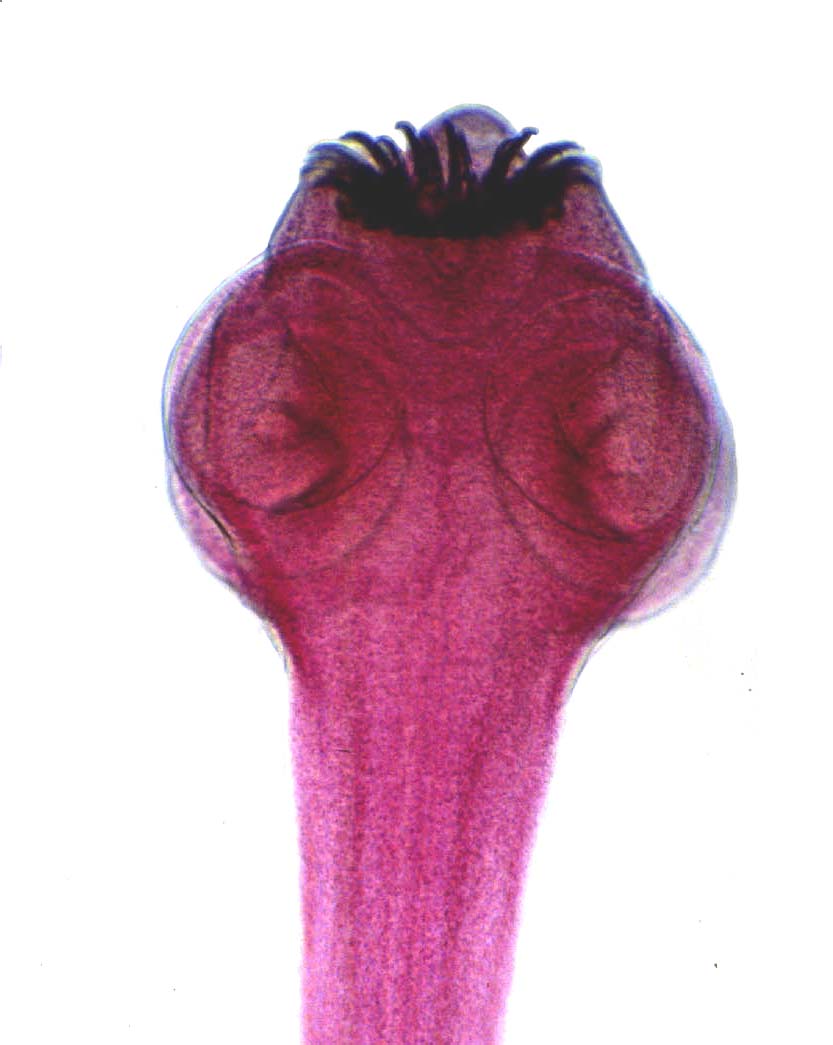Adaptation
One adaptation Dipylidium caninum needs in order to live in the environment it does would be the scolex. Used for attachment to its host, the scolex has a rostellum and four suckers. The rostellum is a structure that has a rose thorn-like appearance which helps cling onto the lumen of the host's small intestine. Whereas the four suckers attach via suction.
Because Dipylidium caninum does not have a digestive tract, it has made the adaptation to be tegument which means to absorb nutrients through the body covering. This adaptation is ideal for this particular parasite because it gets the maximum benefit with the partially digested food in the small intestine.
Like all platyhelminthes, there has
been an evolution of a central nervous system and
peripheral nervous system. Although somewhat primitive,
the nervous system of Dipylidium caninum
has great complexity. First, the central nervous system
consists of ganglia and longitudinal nerve cords. Also,
the peripheral nervous system is made up of nerve-nets below the
epidermis that run across the body.
nervous system is made up of nerve-nets below the
epidermis that run across the body.
Specifically in Dipylidium caninum, there are
two lateral ganglia and a pair of dorsal and ventral
longitudinal nerve cords in the central nervous system
of the scolex. From each ganglia, three longitudinal
nerve cords run posteriorly throughout the organism
which makes a total of ten nerve cords. The peripheral
nervous system, the nerve net, supplys the tegument with
many nerve endings.
Back to Home
